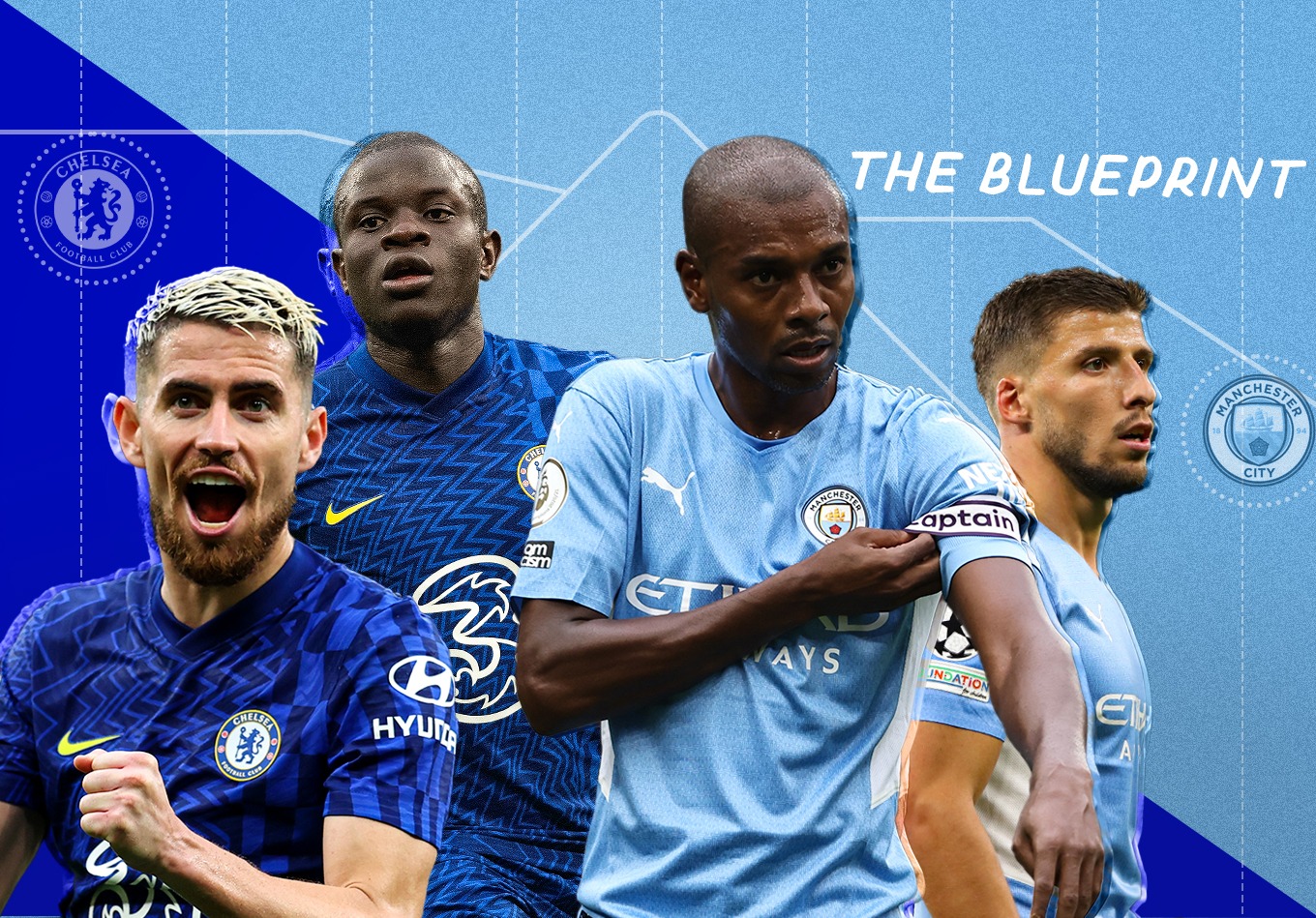After a tepid home draw to Southampton last weekend, Manchester City travel to Chelsea this Saturday at the start of a brutal stretch that takes them to Paris Saint-Germain and Liverpool next.
A visit to Stamford Bridge is far from ideal for Pep Guardiola. Since Thomas Tuchel arrived in England in January, Chelsea have faced City three times and beaten them on every single occasion.
Those defeats came in hugely important matches too, with Chelsea dumping City out of the FA Cup in April, delaying their Premier League title celebrations in May and then, in the one that will sting Pep the most, beating them to the Champions League title.
Tuchel, having failed to win in the managers’ first five meetings at Mainz and Borussia Dortmund, has now gained the upper hand over Guardiola.
Will history repeat itself on Saturday? Or does Guardiola have something up his sleeve to combat what has been a nightmare matchup for his side in recent meetings?
Here are five tactical trends that could decide how this clash pans out…
1. With the Deepest Squads in the League, the Answer May Come from the Bench
There’s no doubt that Chelsea and Manchester City have two of the deepest squads in the Premier League. If we needed any more confirmation of that, here’s a selection of Guardiola and Tuchel’s substitute options last weekend:
Chelsea: N’Golo Kanté, Timo Werner, Saúl Ñíguez, Callum Hudson-Odoi, Ben Chilwell, Hakim Ziyech, Reece James
Manchester City: Ferran Torres, Kevin De Bruyne, Riyad Mahrez, Phil Foden
Frightening.
With two extremely strong and evenly matched sides, how each manager utilises their bench to make tactical adjustments may well be the crucial element that breaks this game open.
Tuchel did this to fantastic effect in Chelsea’s 3-0 victory away at Tottenham. Let’s look at how. A mini case study if you will.
We’ll admit, it feels a little bit unfair when you can bring N’Golo Kanté on at half-time, but that’s exactly what the German boss did against Spurs to turn the London derby on its head.
After an even first half, where arguably Tottenham were the better side, Chelsea captain César Azpilicueta revealed that Tuchel was not happy at half-time.
“He was not happy,” he told Sky Sports after the game. “… They created a few chances where we could have conceded. Even in duels, we were not as good as we usually are. We were sometimes too open, and it was something that we had to address. Playing like this, we couldn’t expect to win the game.”
Tuchel was right. Chelsea were poor by their standards in the first half, and Spurs got the better of them on many metrics.
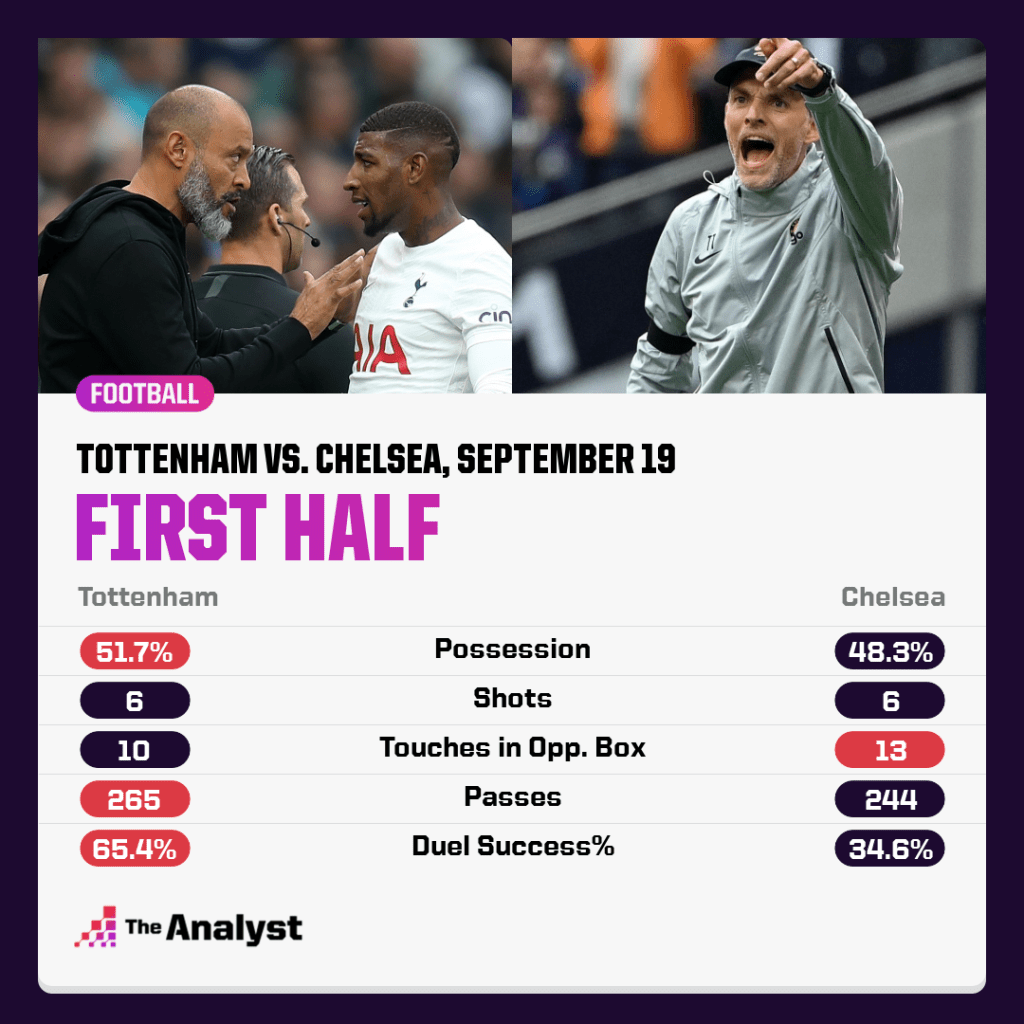
Looking at the duel success numbers clearly points to Chelsea’s lack of intensity. Spurs started brightly and positively and were quicker and sharper to every loose ball.
So, at half-time, Tuchel reacted in the best possible way. He brought on the tireless Kanté to change the game: “With N’Golo on the bench, it’s the best player to bring on because he’s unique and can change any momentum.”
Ah, we’re glad you used the word momentum there, Thomas. It allows us to unveil a new match graphic. Using our possession value (PV) metric, which assigns credit to individual players based on their positive and negative contributions on the ball, we can analyse the shifts in momentum during a match.

The graphic above shows the domination that Chelsea enjoyed in the second half as Spurs faded and the Blues came on stronger.
Firstly, playing deeper than Mason Mount, Kanté’s inclusion gave them an extra body in midfield out of possession, providing Chelsea with a much-needed foothold in the game.
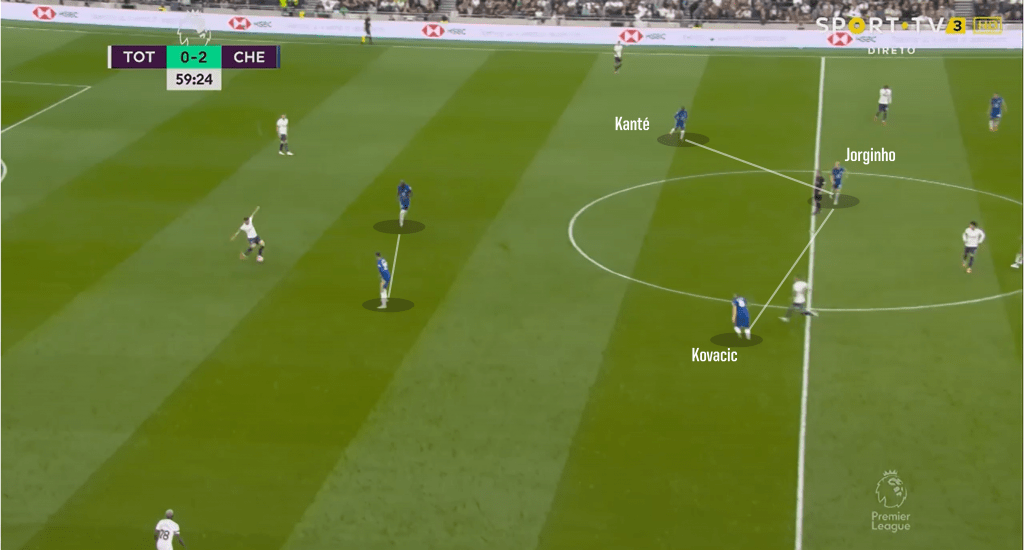
But more importantly, what Kanté brought was his incredible work rate.
“If you have N’Golo, you have something everybody is looking for,” Tuchel added. “You have work rate, intensity. I see this every day in training. It’s hard to believe how good he is.”
Kanté dynamism appears in the running numbers. The midfielder clocked the highest average speed of all Chelsea players during the match at 7 km/h. Granted, he only played 45 minutes, but come on, he’s N’Golo Kanté. You might back him to beat everyone else even if it was his second match of the day.
His attitude was infectious.
Early in the second half, Chelsea started to build pressure through a series of corners. Spurs scramble one clear and attempt to counter through Heung-Min Son…
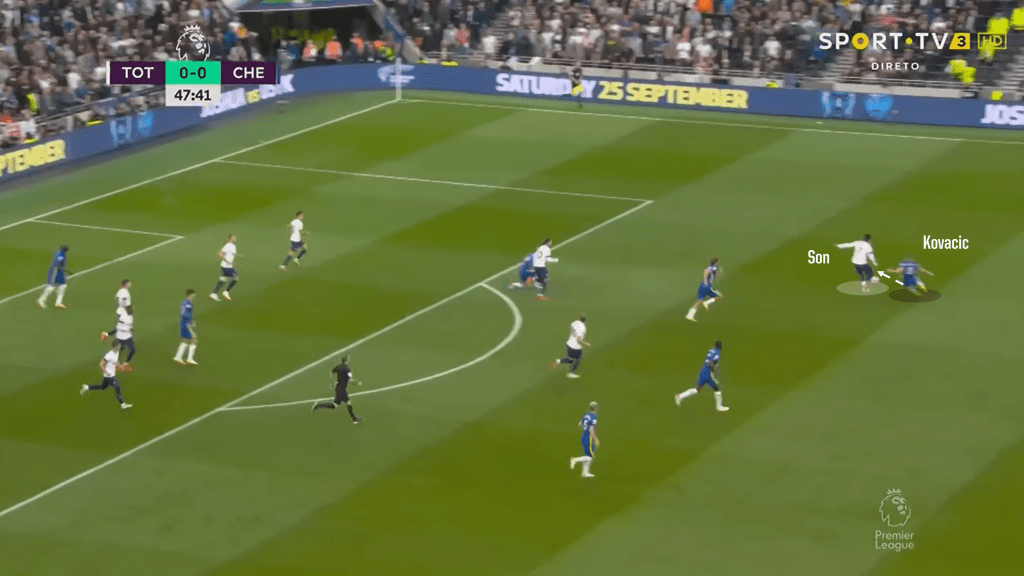
But Kovacic is alert to the danger and puts in a crunching tackle to keep the threat alive. It was to set the tone for the rest of the game, as Chelsea’s second-half duel success rate rose from a poor 34.6% in the first period to 57.4% in the second.
Kanté’s impact in possession came shortly after.
Three minutes into the second-half, he drifts off the back of Dele Alli, getting behind the Spurs midfielder.
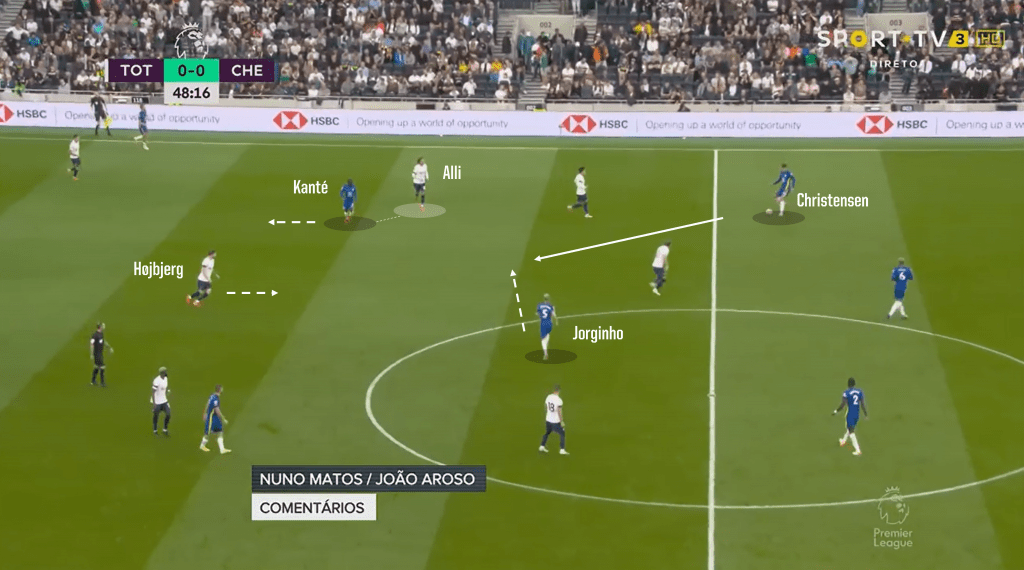
As the ball is played into Jorginho, Pierre-Emile Højbjerg pressures the Italian, leaving space in behind. Jorginho plays a lovely ball round to the corner to Kanté…
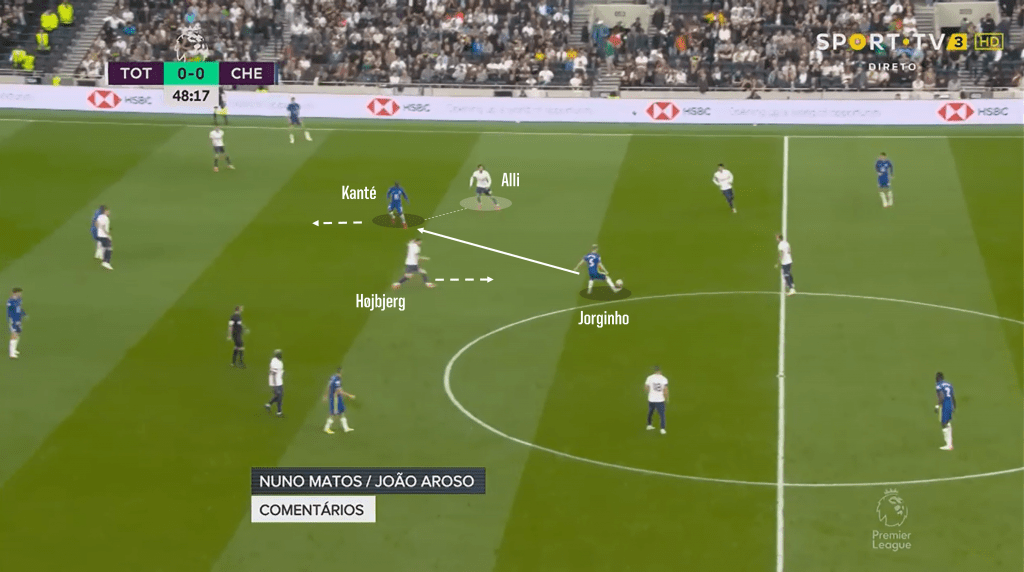
Who takes the ball in his stride before surging forward.
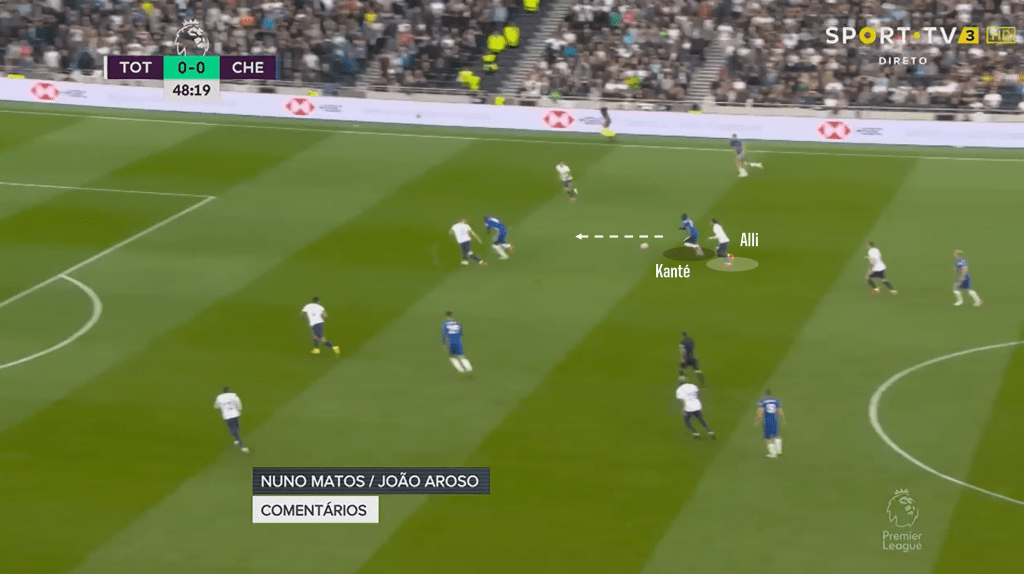
Kanté’s driving run started the attack that led to the corner from which Chelsea scored their opener. It was an example of Tuchel’s brilliant and reactionary managing.
Both managers will have huge talent reserves to call upon as this game progresses. Don’t be surprised to see this match decided from the bench.
2. City to Use a Man-for-Man Press on Chelsea’s Back Three?
Part of the reason why Chelsea were on the backfoot for the first half, particularly in the opening stages, was Spurs’ positivity without the ball. They looked to press high and win the ball inside Chelsea’s half.
This was evident almost immediately in a passage of play six minutes in.
Spurs’ front three matches up with Chelsea’s back three and they press aggressively. First, Son pressures Thiago Silva with the ball, forcing him to knock it square to Antonio Rüdiger…
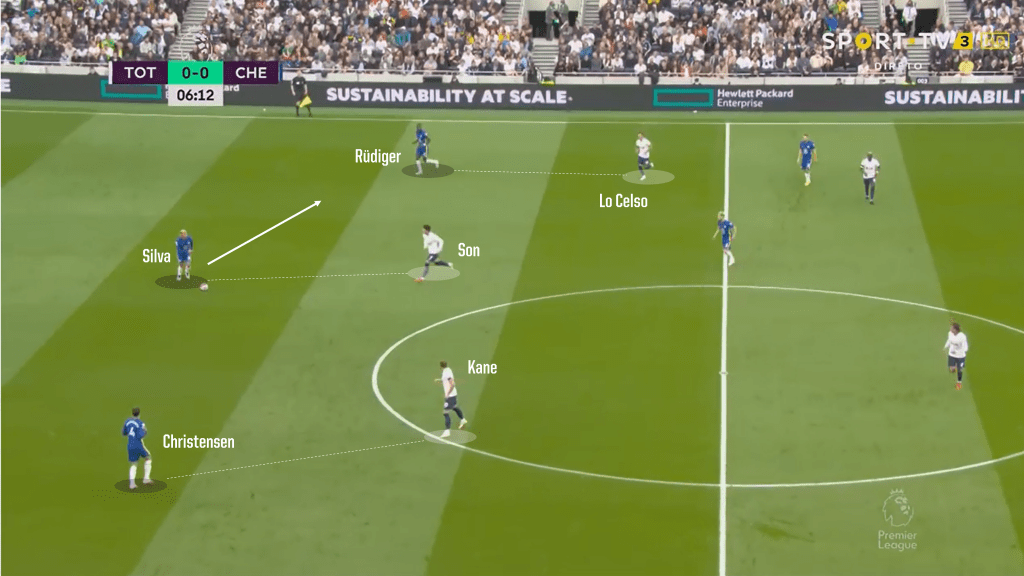
Rüdiger is then immediately pressured by Giovanni Lo Celso. His only option is to prod it down the line to Kovacic, as Lo Celso’s cover shadow is blocking the pass into Jorginho.
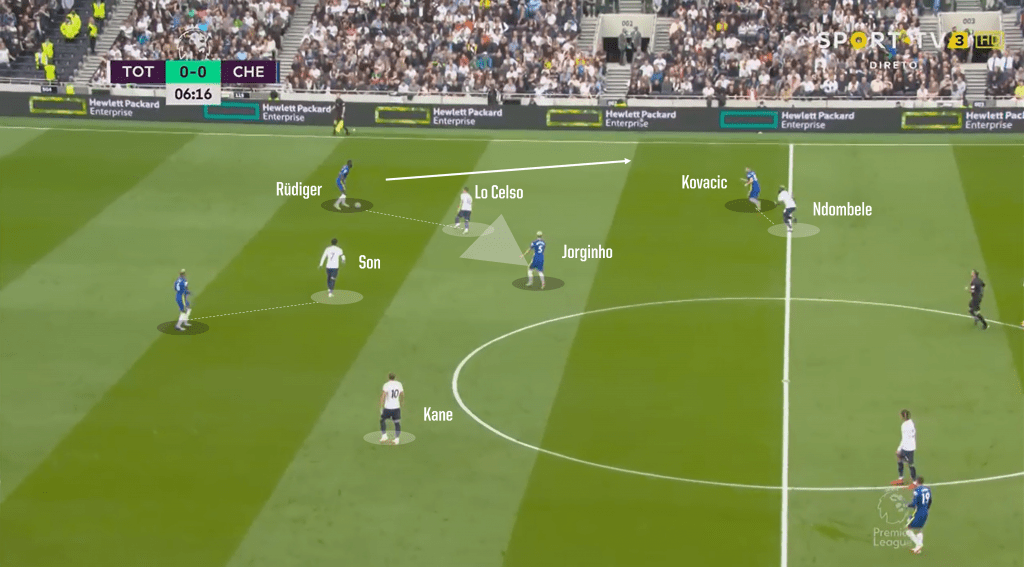
Tanguy Ndombele shuttles across to mark Kovacic and pressures him as soon as he receives the ball from Rüdiger, forcing him to go all the way back to Kepa in goal.

The ball is recycled to Andreas Christensen, who Kane hunts down. Note the position of Kane’s fellow forwards. They are still very high, and man-for-man. Christensen passes inside to Silva…
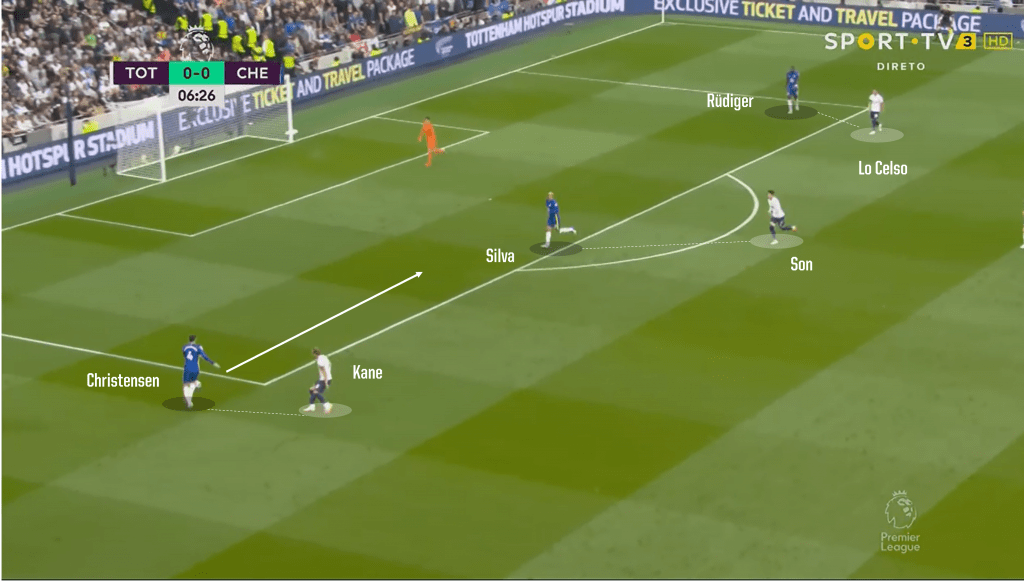
Under pressure from Son, Silva is forced to play long, mis-hitting a clearance up field. Spurs then pounce on the loose ball.
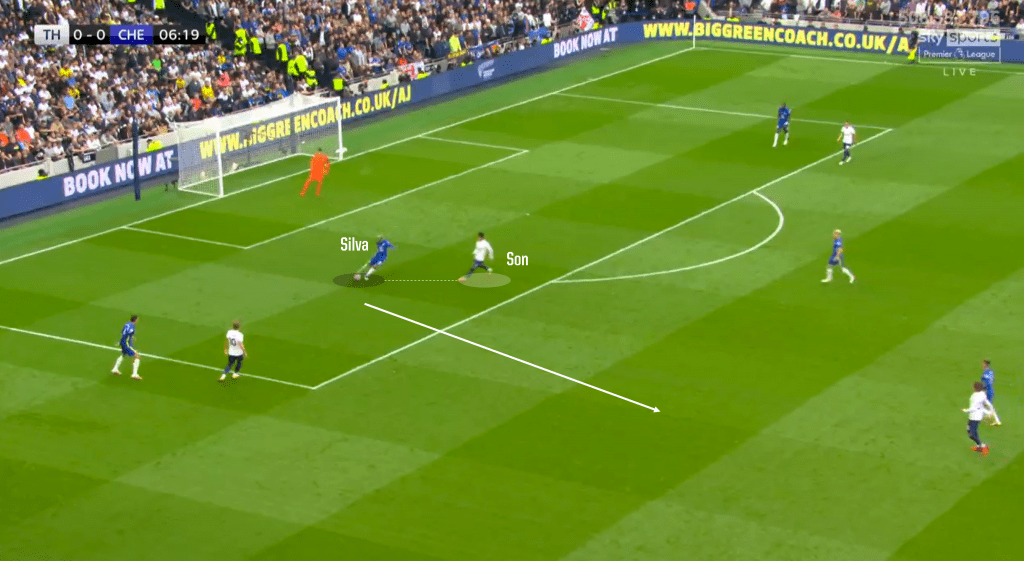
A carbon copy of this sequence happened after eight minutes, with Spurs’ front three again going man-to-man on Chelsea’s centre-backs, forcing Rüdiger to put the ball out for a throw in.
To quantify Spurs’ proactivity, we can use the Premier League insight feed. This data feed combines event data and tracking data to reveal more information about what’s happening on the pitch. It tells us that against Chelsea, Nuno’s side completed more presses (24), for longer (7.8 seconds per press), and with more players each time (2.8 players) than in any of their games so far.
That average press duration and average number of players per press is the fifth highest of any team in a single match so far this season.
So why does this matter? Well, Manchester City are the league’s highest pressing side through the first five matches. And you bet Guardiola would have been taking notes.
City’s average PPDA – or opponent passes per defensive action – of 10 is the lowest in the league so far. And over these first five games, no side has employed a longer press (seven seconds on average) or brought a press with more players (2.6 on average) than Pep’s side.
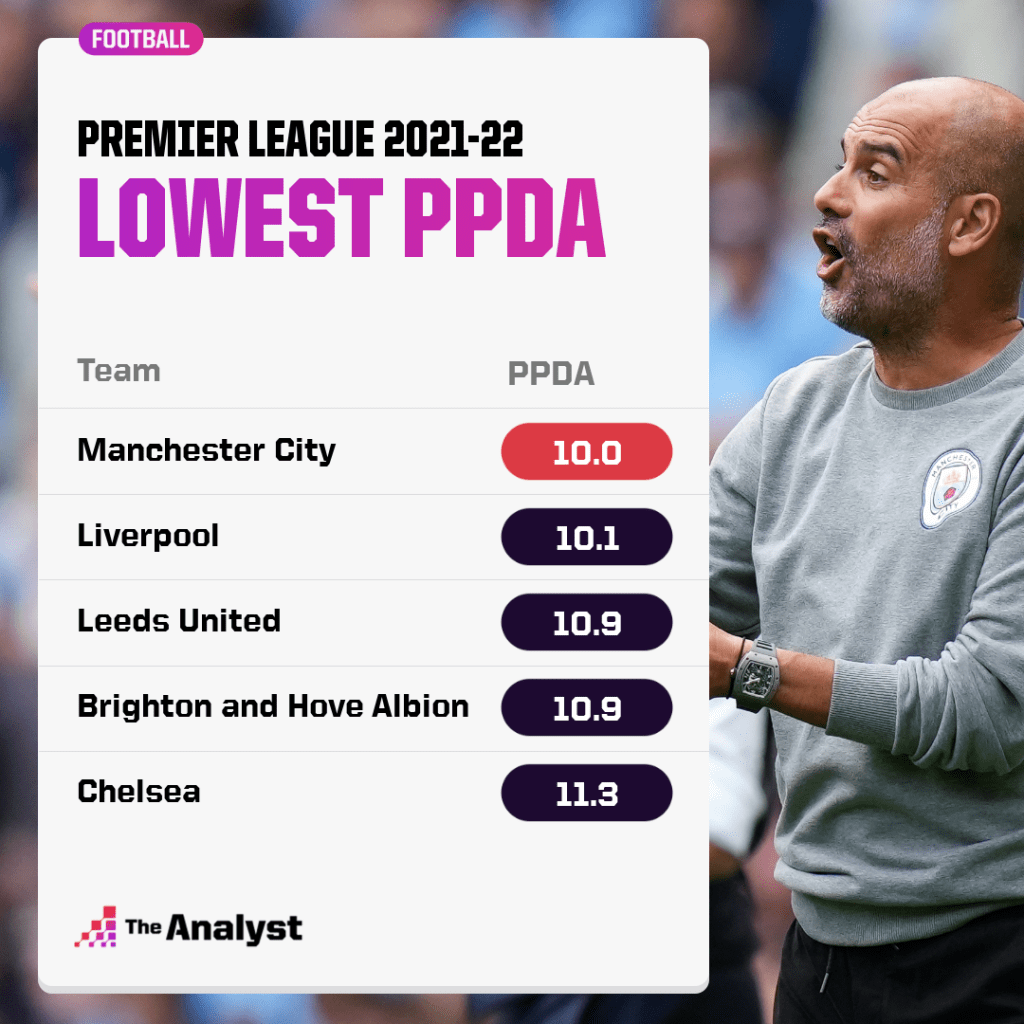
His side is very well suited to execute the tactic that brought Spurs success in the first half.
Look for his forward line to exert early pressure on Chelsea’s three centre-backs.
3. But Chelsea Are Really Good at Playing Out Under Pressure
The problem for City, and indeed any side playing Chelsea, is that they’re really quite good at handling pressure. It helps being able to feed the ball into Jorginho and Kovacic in midfield, who are two extremely press-resistant players.
And it’s good that they’re press-resistant, because as conduits between defence and attack they get put under a hell of a lot of pressure.
Here’s a breakdown of the most commonly pressured players in the Premier League so far. Note the position of both Chelsea midfielders on this list.
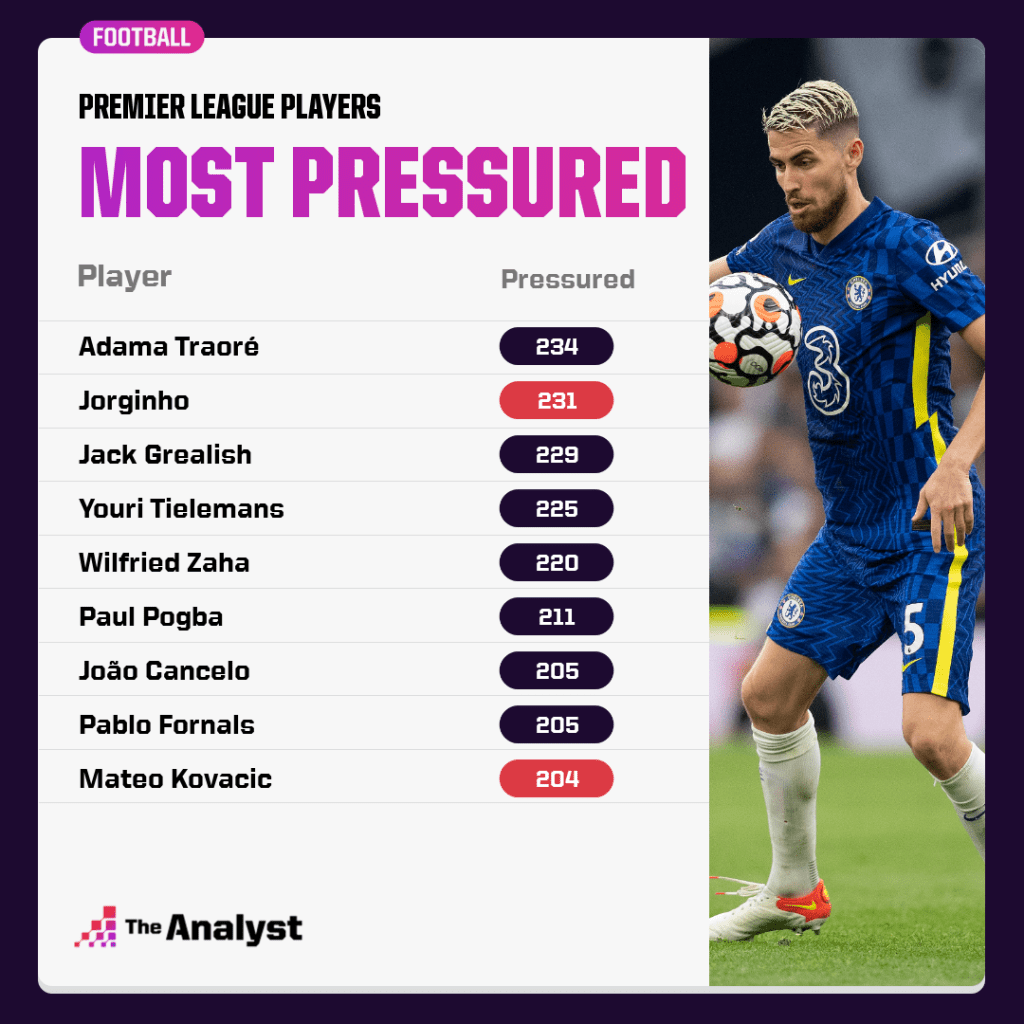
Both are exceptionally comfortable on the ball. For starters, Kovacic (91%) and Jorginho (89%) both rank inside the top 10 for passing accuracy among midfielders in the league so far this season (min. of 250 minutes).
And using the same comparison, the pair retain the ball well. Jorginho loses possession just 9.4 times per 90 (10th best) and his partner 9.8 times per 90 (13th best). Considering the level of pressure they come under, that’s impressive.
Both have excellent close control and are extremely adept at receiving the ball in tight spaces.
Here’s an example from midway through the first half, again against Tottenham. Jorginho receives the ball, looks up and has Højbjerg in his face and Kane pressing from his right…
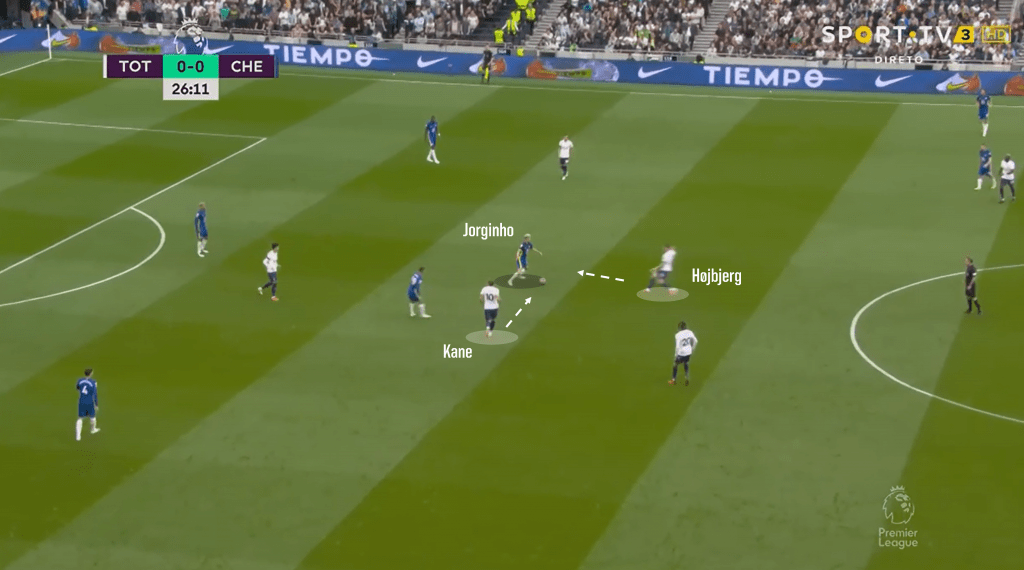
He turns neatly away from the incoming Dane…

Before pirouetting away from Kane as well, drawing the foul.
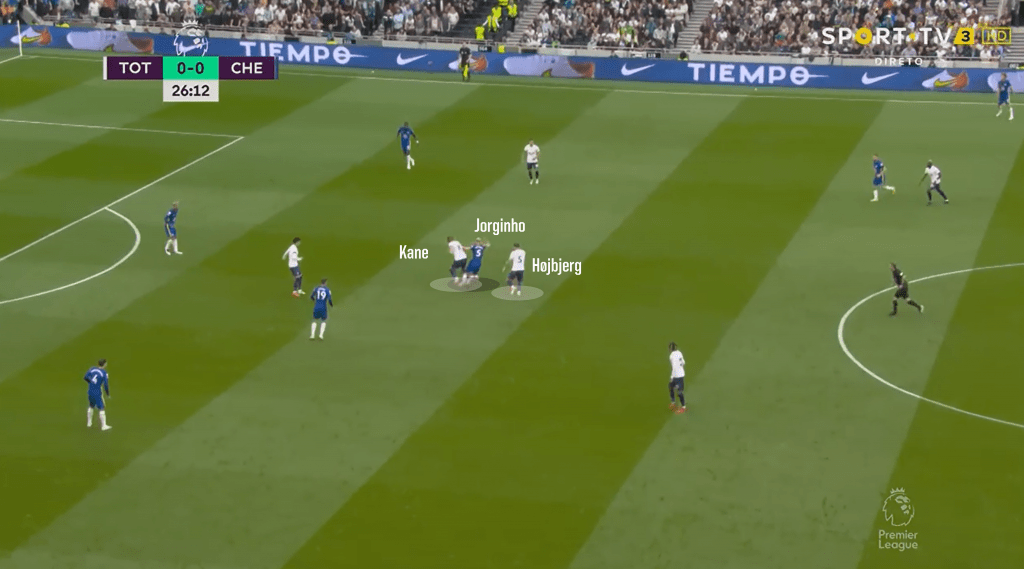
The pair will be the fulcrum for linking Chelsea’s defence and attack, and when Manchester City press them high, they’ll be put under all sorts of pressure.
Expect that to be an exciting mini battle come Saturday.
4. Chelsea to target Manchester City’s Defensive Midfielder?
“Today we didn’t win not because we didn’t have a centre-forward, we didn’t win because our process [in the] build-up or give better balls for the players up front were not good,” Guardiola said after his side’s home draw against Southampton.
And the numbers show that Manchester City really struggled to find any sort of rhythm against the Saints. For a start, they only managed 11 open-play sequences that contained 10+ passes in the match, their lowest total in a match this season. And only two of these 10+ pass possessions ended in a shot or a touch in the box, again their lowest in a single match so far.
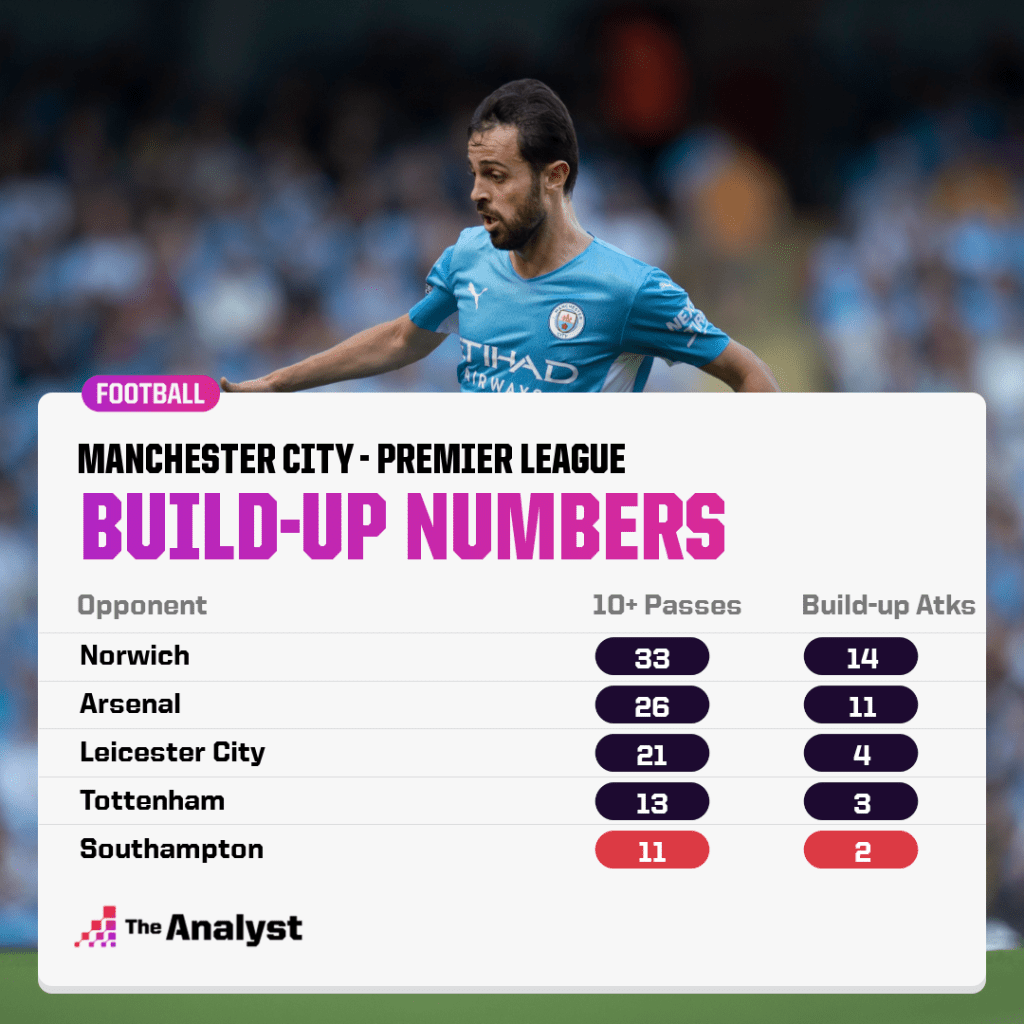
It was evident that the Cityzens struggled to break down a very well organised Southampton team. Ralph Hasenhüttl’s side set up in a compact 4-2-2-2 shape and they looked to block City’s ability to play centrally through the lines.
What this meant was that Southampton were happy to cede space to Fernandinho in the middle of park.
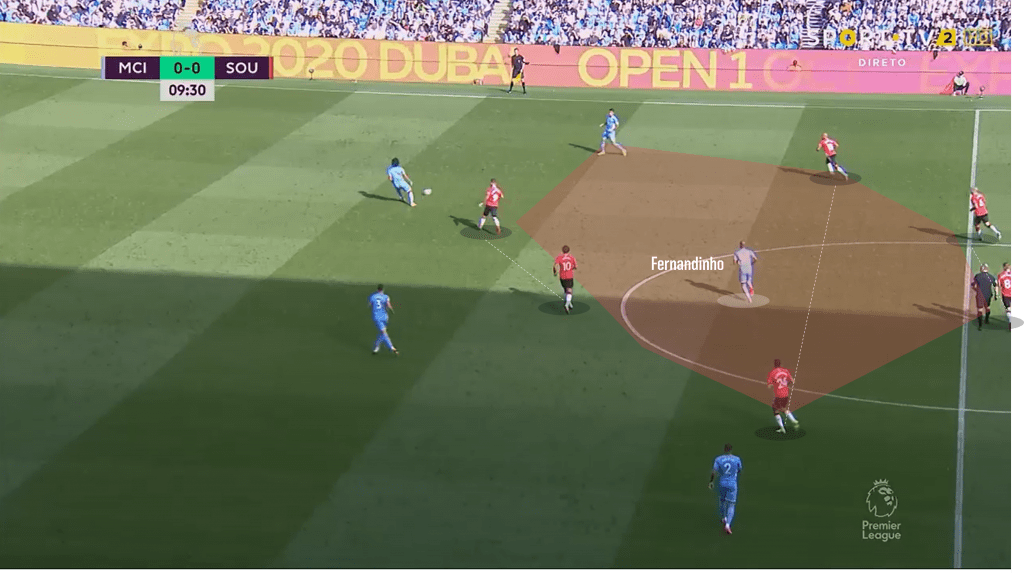
It sounds a little counterintuitive to voluntarily give a midfielder time and space. But as soon as the City captain got on the ball, the Southampton midfield – sometimes up to four of them – swarmed in a pack to block his passing angles forward.
Look at the pressure they’re applying on him in this freeze frame below. He’s pressured on all sides, with secondary players moving to block off his passing options.
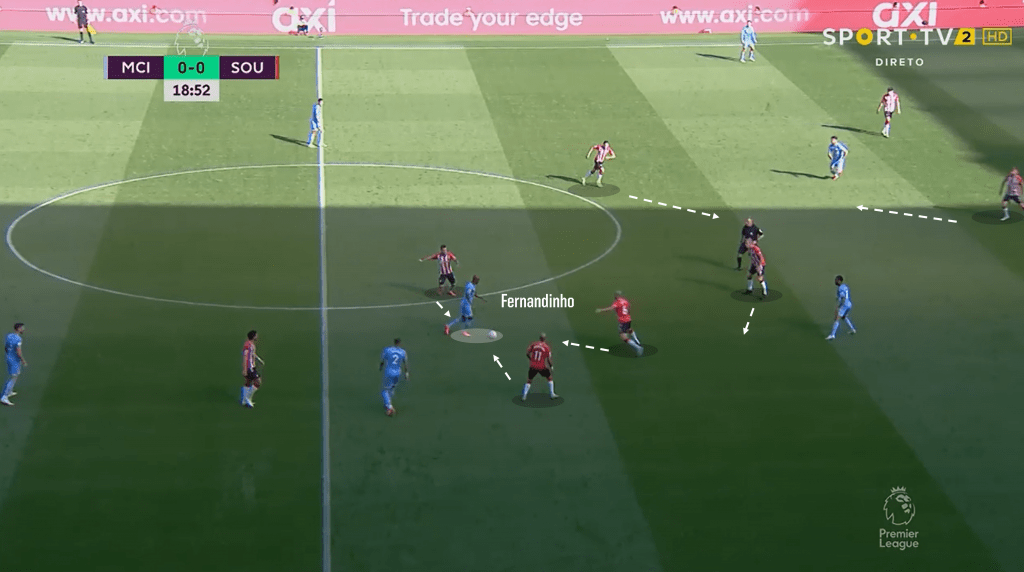
Fernandinho attempts a difficult ball into the feet of İlkay Gündoğan, and it’s easily intercepted.
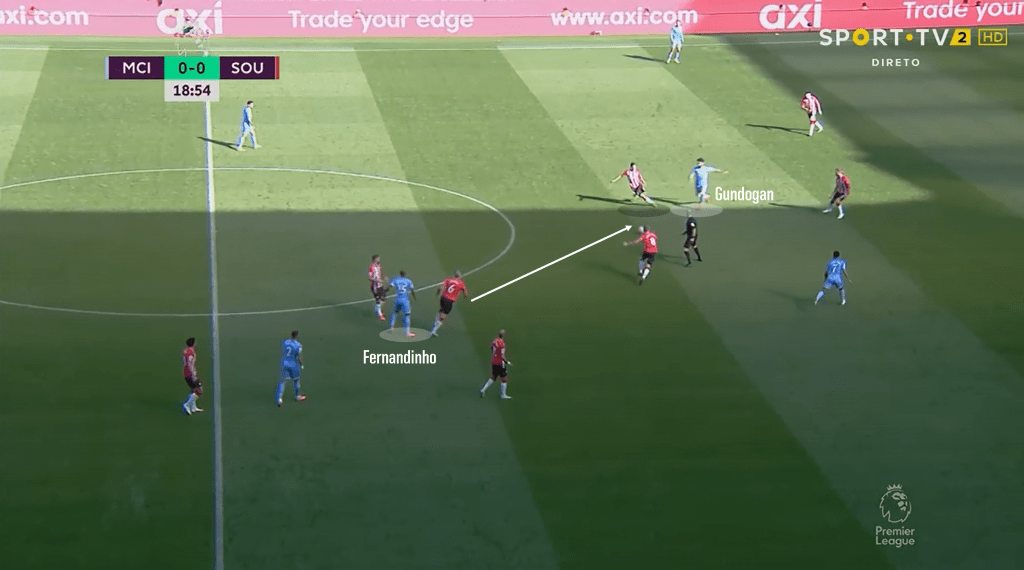
Southampton consistently put Fernandinho’s passing range under scrutiny all day. He had an unenjoyable afternoon, completing just 65% of his passes in Southampton’s half, the lowest success rate he’s managed in a game since April of this year.
Such was Southampton’s ability to disrupt City’s passing patterns that the home side managed one shot on target from 16 attempts – their lowest tally in a top-flight game since they played Stoke in March 2017.
Now, there’s almost zero chance Tuchel is going to change from his beloved 3-5-2 formation, but whoever Pep deploys as the holding midfielder is going to come under considerable pressure. Hasenhüttl said his side studied how RB Leipzig approached their game against City in the Champions League, and there’s no doubt that Tuchel will have analysed how the Saints stymied City’s attack.
5. Man City to Go Three at the Back?
Tuchel’s recent record against Guardiola is exceptional. He’s beaten him in each of his three matches, with two of those being crunch knockout fixtures.
A possible way for Manchester City to combat the recent one-way pattern of matches could be to deploy three-centre backs to match up directly with Chelsea’s 3-5-2 shape. In the league game last May – you know, the one where Aguero fluffed the title-sealing Panenka – Pep lined up with a back three. At the time it felt like he was trailing it ahead of the Champions League final, although Pep being Pep, he didn’t end up using it in that match.
But in that game, Pep saw some success with this formation. Let’s be honest, if Aguero scores the penalty on the stroke of half-time, then City probably go on to win that game. Maybe he sticks with the formation for the Champions League final, and maybe they go on to win that as well. Maybe.
In open play, playing 3-5-2 means that the team in possession has a numerical advantage in the first phase of play. This could allow City’s right- and left-sided centre-backs, possibly Rúben Dias and Aymeric Laporte (who’ve completed the first- and sixth-most carries in the league already this season), the space to carry the ball up field to propel City forward. This movement could also draw Chelsea’s midfielders out to close them down, making room for passes into City’s midfielders.
Pep’s side saw some success attacking the space behind Rüdiger in the league game last May. The German often got drawn out of position trying to close down one of City’s midfielders, leaving space in behind for City’s forwards to run into.
On the stroke of half-time, he’s pulled toward Torres, leaving space for Gabriel Jesus to run in behind …
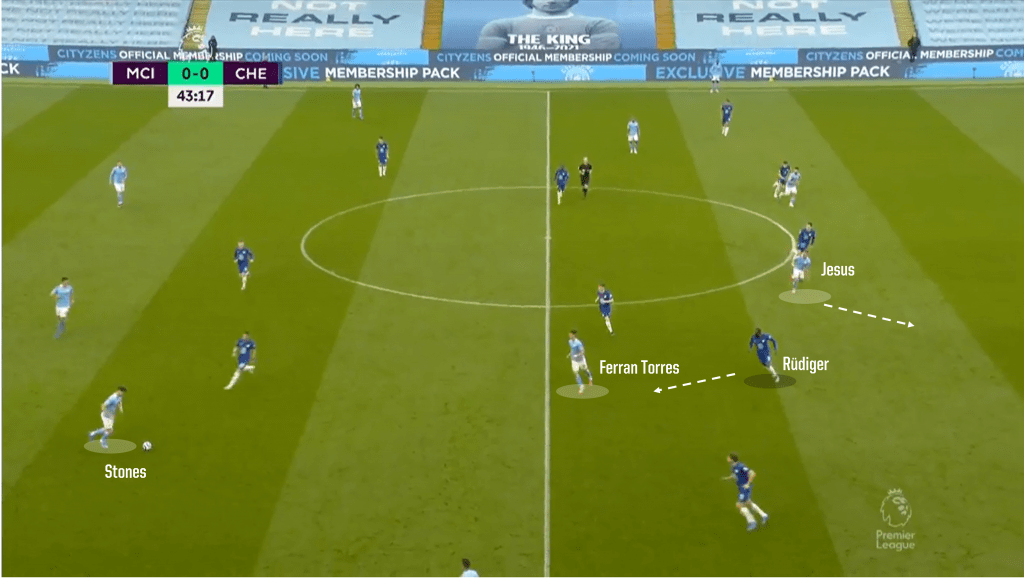
Stones clips the ball over him to find the run of Jesus. The Brazilian beats Christensen in a foot race before squaring for Sterling to tap-in. But if Rüdiger is too passive and doesn’t press, then he runs the risk of allowing City’s midfielder time to receive the ball in between the lines, turn and create from deep.
We’ll be damned if we’re going to tell Guardiola how to set up his team tactically, but given Tuchel seems to have the wool over his opposite number in recent encounters, it might be worth the City boss setting up like this to at least ask a few new questions.
All signs point to a fascinating tactical battle. A win here will see the Blues go six points clear of City and, given Chelsea’s remarkable squad depth and the hunger that comes from chasing their first title under Tuchel, that could be the gap they need.
We’ll sign off with this from The Athletic journalist Jack Pitt-Brooke who neatly encapsulates the gravity of this game:
Enjoy this? Subscribe to our newsletter to receive exclusive content.
Design by Briggs Clinard. Motion graphics by Stefano Gradaschi.
